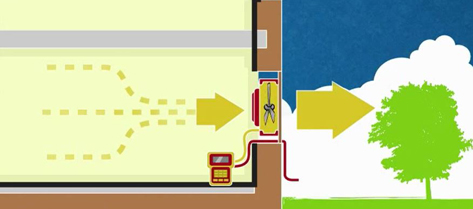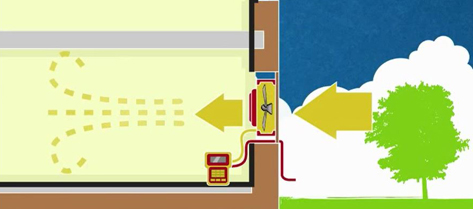Passivhaus Airtightness test
At Energaia, we carry out air tightness test to enable our clients to meet Passivhaus Standards (n50).
Our passivhaus air pressure tests are by means of a “blower door” in accordance with BS EN 13829 testing requirements.
The Passivhaus Standard requires that the air change rate must be less than or equal to 0.6 air changes per hour at a pressure differential of 50 Pascals i.e.
n50 ≤ 0.6 h-1 @ 50Pa
The passivhaus air tightness test standard (n50) is different from the building regulations standard (q50). The air tightness results for Passivhaus is calculated using the building's internal volume m3 rather than the building's envelop area m2.
Initial Test
It is recommended that the initial test should be carried out as soon as the air barrier is established but before building services are installed. This makes it possible to properly assess the the effectiveness of the air barrier.
Pre-Completion Test
The Pre-Completion Test is to be carried out after the building services are installed. This helps to determine any issues or further leakages that may have been introduced by the installation of the building services.
Completion Test
The final test is be carried out upon completion of the building and used for Passivhaus certification purposes. While the first two tests allow for identification and remediation of leakage issues, the final test confirms that the building conforms to Passivhaus Standards.
How Passivhaus Test is Done?
The Passivhaus Standard requires both de-pressurisation and pressurisation approches to air tightness testing with the final result being the average. This is different from building regulations air tightness test where either de-pressurisation or pressurisation can be used.


